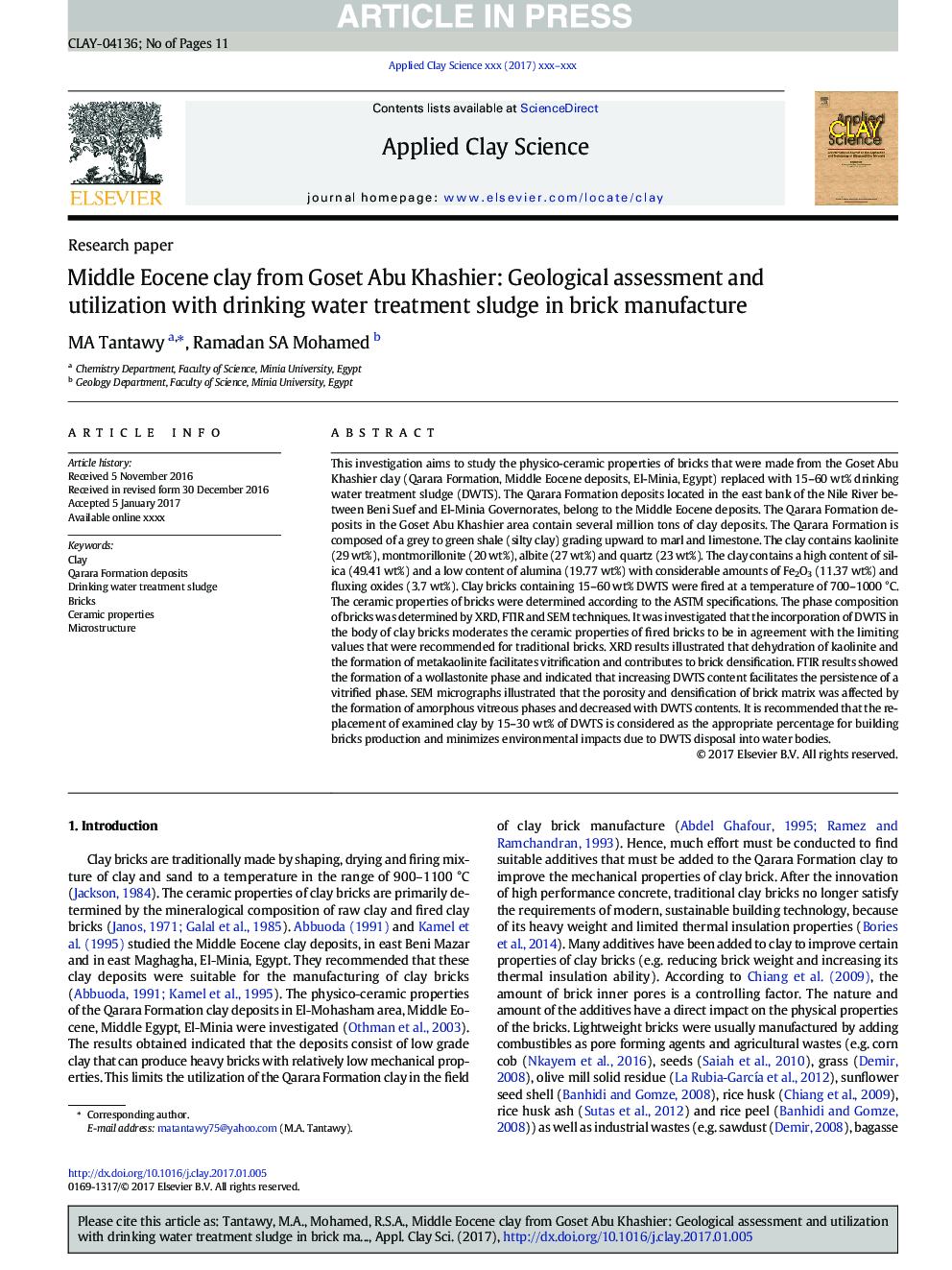| کد مقاله | کد نشریه | سال انتشار | مقاله انگلیسی | نسخه تمام متن |
|---|---|---|---|---|
| 5469069 | 1519050 | 2017 | 11 صفحه PDF | دانلود رایگان |
عنوان انگلیسی مقاله ISI
Middle Eocene clay from Goset Abu Khashier: Geological assessment and utilization with drinking water treatment sludge in brick manufacture
دانلود مقاله + سفارش ترجمه
دانلود مقاله ISI انگلیسی
رایگان برای ایرانیان
کلمات کلیدی
موضوعات مرتبط
مهندسی و علوم پایه
علوم زمین و سیارات
ژئوشیمی و پترولوژی
پیش نمایش صفحه اول مقاله

چکیده انگلیسی
This investigation aims to study the physico-ceramic properties of bricks that were made from the Goset Abu Khashier clay (Qarara Formation, Middle Eocene deposits, El-Minia, Egypt) replaced with 15-60 wt% drinking water treatment sludge (DWTS). The Qarara Formation deposits located in the east bank of the Nile River between Beni Suef and El-Minia Governorates, belong to the Middle Eocene deposits. The Qarara Formation deposits in the Goset Abu Khashier area contain several million tons of clay deposits. The Qarara Formation is composed of a grey to green shale (silty clay) grading upward to marl and limestone. The clay contains kaolinite (29 wt%), montmorillonite (20 wt%), albite (27 wt%) and quartz (23 wt%). The clay contains a high content of silica (49.41 wt%) and a low content of alumina (19.77 wt%) with considerable amounts of Fe2O3 (11.37 wt%) and fluxing oxides (3.7 wt%). Clay bricks containing 15-60 wt% DWTS were fired at a temperature of 700-1000 °C. The ceramic properties of bricks were determined according to the ASTM specifications. The phase composition of bricks was determined by XRD, FTIR and SEM techniques. It was investigated that the incorporation of DWTS in the body of clay bricks moderates the ceramic properties of fired bricks to be in agreement with the limiting values that were recommended for traditional bricks. XRD results illustrated that dehydration of kaolinite and the formation of metakaolinite facilitates vitrification and contributes to brick densification. FTIR results showed the formation of a wollastonite phase and indicated that increasing DWTS content facilitates the persistence of a vitrified phase. SEM micrographs illustrated that the porosity and densification of brick matrix was affected by the formation of amorphous vitreous phases and decreased with DWTS contents. It is recommended that the replacement of examined clay by 15-30 wt% of DWTS is considered as the appropriate percentage for building bricks production and minimizes environmental impacts due to DWTS disposal into water bodies.
ناشر
Database: Elsevier - ScienceDirect (ساینس دایرکت)
Journal: Applied Clay Science - Volume 138, 15 March 2017, Pages 114-124
Journal: Applied Clay Science - Volume 138, 15 March 2017, Pages 114-124
نویسندگان
MA Tantawy, Ramadan SA Mohamed,